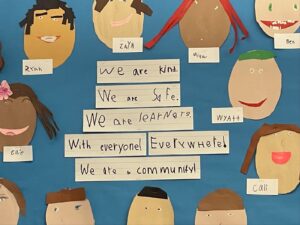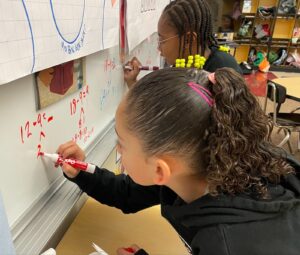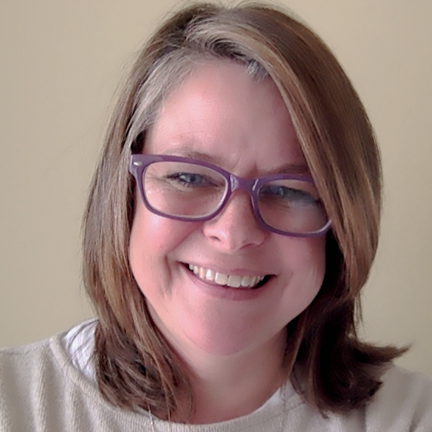“Mrs. Parks, look what I did last night!” Finley said before she even got to the classroom door. I looked at the scratch piece of paper that she presented. The paper had various math problems written by an adult that she had solved using the “make 10” strategy we had been exploring in class. I asked if I could give her another problem to see her solve her way through it. She was eager to show me her thinking through the problem and indeed used the “make 10” strategy to solve it to a correct answer. As she wrote the last number, she looked up at me with a surprised and delighted expression on her face. “Mrs. Parks,” she said, “I’m a math person!”
To begin the year and throughout our workshop lessons, we talk about how each of us is a math person, and I try to show students that we are all math people, but in this moment she truly (finally?) believed it. “Finley,” I replied, “you absolutely are a math person, but you are also a writing person, a reading person, a friend person…”
Her smile froze as I spoke, as though she were processing this information. Then with excited surprise she interrupted, “I’m an everything person!”
One of the first series of lessons that happens in my class, as we spend time getting to know each other and launching our workshops, is student input on classroom agreements. Students have lots of input on this topic—I listen and chart all of it. Then I help students funnel their agreements into three big ideas:
We are kind,
We are safe,
We are learners,
with everyone, everywhere!

We use interactive writing to post these agreements, and I use the language throughout our day, weaving it into lessons, community circles, and problem-solving scenarios to become the fabric of our classroom wardrobe.
On this day as I watched Finley’s identity grow and shift, I realized that within these agreements are tenets of engagement that are the thread through the fabric that the classroom community is built upon. These supported Finley to feel safe to grow and engaged to realize her own potential, her own identity:
-
We’re all learners, i.e., math people, reading people, and so on.
-
Mistakes can be helpful for our brains to grow and learn.
-
When we make mistakes, we need to fix them.
-
When something is hard, we just don’t know how to do it well yet. We need to practice.
-
Slow down.
-
I am here to help and I believe in all of you. So are your classmates and so do your classmates.
These tenets become part of our classroom foundation, and the fabric wraps around each of us and all of us together. Unknowingly, Finley acted on these tenets. She allowed herself to make mistakes, she didn’t give up, she was engaged in the learning so much that she took it home to continue the effort, she practiced, and she believed in herself.
And in the moment when she shared her math with me, Finley genuinely felt this foundation under and around her. In that split second her self-identity shifted and so did her confidence, her happiness, and her eagerness to learn more. As Finley discovered new things about herself, my understanding of this process, my classroom philosophy, and our environment grew as well.
Here are my suggestions:
-
Have a foundation/tenets. Believe them, live by them each day in the classroom. Weave them into your classroom fabric.
-
Celebrate mistakes and approximations. Continue to live mistakes in front of the students and speak out that mistakes are part of growing; we just need to fix them, i.e., try the problem again, read another book with the phonics pattern, communicate with classmates to fix friendship issues, let the watercolors run into each other. It will be okay.
-
Practice. Share my practice with the class, celebrate theirs.
-
Slow down. And when the rush of teaching pressures begins to take hold, take a breath.
-
Take the time to build a community of support, equity, and engagement. Continue building it throughout the year.

Finley loved sharing her new math understandings with her classmates, and I loved watching her new self-identity blossom.



